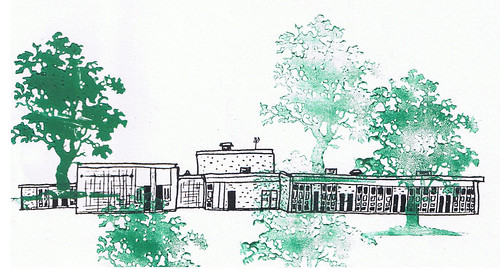 Newsday reports: “Wyandanch’s board president says the system should close and send its 1,900 students to other districts nearby.”
Newsday reports: “Wyandanch’s board president says the system should close and send its 1,900 students to other districts nearby.”
KW writes: I know that school district issues are complicated. School districts are not just bureaucracies, they are also quasi-governmental entities.
Still, I think the bottom line of the current problem with the Wyandanch Schools is probably racism, segregation, and the poverty that accompanies these concerns in our current system (and, specifically, in the Town of Babylon).
Wyandanch Schools has a huge budget shortfall. And, neither the community nor the school district want to raise taxes. Note that the children of Wyandanch could be helped or bailed out by: the state government, the federal government, or a generous private interest. Though, none of those are coming forward to help enough.
I would say that the bottom line reason that Wyandanch exists as a school district is to be a dumping ground for the poor and minority neighborhoods which should have logically been drawn into district lines for surrounding school districts. (I say “dumping ground” as an economic probability, understanding that there is now a sense of positive community, cohesiveness, and identity that has been created around the idea of Wyandanch.)
If you look at the numbers, they just don’t lie. Wyandanch is in a circle of educational segregation. I found a chart at City-Data: here. Wyandanch School District is .3% white. The border school districts, in less dire straits, which might be now prevailed upon to accept Wyandanch students are: Lindenhurst Schools [84% white]; West Babylon Schools [81.9% white]; Half Hollow Schools [71.9% white]; and North Babylon Schools [62.3% white]. For my own part, I think we should consider Babylon Schools (in Babylon Village) as a place that Wyandanch students could be easily transported to. Babylon Schools are 84.4% white.
Similar racial injustice and community segregation are reflected in numbers and statistics at the Town of Babylon webpage: here and below.
What is a person to do?
I for one, will be rooting for the Wyandanch community to express their hopes and solutions. If they choose to stay together and move forward, then people should lobby the NY State Government, the NY State Board of Education, and the federal government to find ways to help the district financially. And, someone could consider starting (or supporting if it exists) a nonprofit, school support fund such as other districts have.
If the Wyandanch community decides that they would like to merge with other districts there would be a lot of ways to help: Vote YES if the request comes through to accept some students into your own school district; lobby your neighbors and school board officials to support the decision; be inviting to students from Wyandanch.
This could be an exciting time to support people who in the past have been pushed to the side by ourselves and/or our government officials.
opinion by Kimberly Wilder
–
(excerpt from) Newsday
Wyandanch School Board says no to 9.8% tax hike
by John Hildebrand / September 22, 2010
Wyandanch’s board president says the system should close and send its 1,900 students to other districts nearby…
“We should just shut the schools down, and open up Lindenhurst, West Babylon, Half Hollow Hills and North Babylon,” board president Denise Baines said in a phone interview Wednesday…
Legally, one district can absorb another only if residents of both vote “yes” – a process rarely used…
–
Town of Babylon webpage gives town demographics:
http://www.townofbabylon.com/demographics.cfm
| The following is a demographic breakdown of the Town of Babylon’s hamlets and incorporated villages: |
| AMITYVILLE VILLAGE |
- “The Friendly Village” is 2.1 square miles with a population of 9,441.Its median family income is $72,632. Five percent of this hamlet’s families live below the poverty level.
- The village’s ethic make up is 84% White, 9% Hispanic or Latino, 9% African-American, and 1% Asian.
- Of the 115 households reporting to have Grandparents as caregivers, 30% are solely responsible for the care of their grandchildren.
- 26% of Amityville Village residents claim to be of Irish ancestry, the next largest group is Italians with 20% of the population.
|
| BABYLON VILLAGE |
- Slightly larger than Amityville at 2.4 square miles, Babylon Village has 12,615 people within its borders.
- The median family income is $78,814.
- Two percent of this hamlet’s families live below the poverty level.
- The village’s ethnic make up is 93 percent white, five percent Hispanic and three percent African-American with most of its residents claiming Irish, Italian or German ancestry.
- Of the 263 households reporting to have Grandparents as caregivers, 19% are solely responsible for the care of their grandchildren.
- 64 percent of Babylon Village residents have lived in their current home for more than 15 years.
|
| COPIAGUE |
- With 21,922 people living within 3.2 square miles, this hamlet is 82 percent white, 21 percent Hispanic and four percent African American.
- The median family income for Copiague residents is $65,369.
- Five percent of this hamlet’s families live below the poverty level.
- Most Copiague residents claim Italian, Irish or German ancestry.
- Of the 610 households reporting to have Grandparents as caregivers, 19% are solely responsible for the care of their grandchildren.
- 63 percent of Copiague residents have lived in their current home for more than 15 years.
|
| DEER PARK |
- The second largest of the town’s hamlets, Deer Park has 28,316 people within 6.2 square miles.
- The median family income is $67,128.
- Slightly over three percent of this hamlet’s families live below the poverty level.
- Deer Park is heavily populated with persons claiming Italian decent (42 percent), and also includes approximately 2,600 African-Americans (9 percent), 2,139 Hispanic or Latinos (8 percent), and 814 Asian persons (3 percent).
- Of the 752 households reporting to have Grandparents as caregivers, 30% are solely responsible for the care of their grandchildren.
- 70 percent of Deer Park residents have lived in their current home for 15 years or more.li>64 percent of Babylon Village residents have lived in their current home for more than 15 years.
|
| EAST FARMINGDALE |
- The Census includes the campus of SUNY Farmingdale when calculating this hamlet’s 5.4 square miles.
- Median family income is $71,726 for this hamlet of 5,400 residents.
- East Farmingdale is the home of Republic Airport.
- This hamlet has a racial make up of 73 percent white, 15 percent African-American and approximately 13 percent Hispanic or Latino.
- Five percent of this hamlet’s families live below the poverty level.
- Of the 207 households reporting to have Grandparents as caregivers, 17% are solely responsible for the care of their grandchildren.
- 63 percent of this hamlet’s residents have lived in their current home for 15 years or more.
|
| GILGO, OAK BEACH & CAPTREE |
- The beach communities are counted as one by the census, with only 333 people scattered over 8.4 miles.
- The median family income is $105,870.
- The ethnic breakdown is 97 percent white, three percent Asian, and approximately two percent Hispanic or Latino.
- 71 percent of these beach community residents have lived in their current home for 15 years or more. <
|
| LINDENHURST VILLAGE |
- One of the largest villages on Long Island based on population, Lindenhurst boasts 27,819 people within 3.8 square miles.
- The median family income is $67,315.
- Of the 717 households reporting to have Grandparents as caregivers, 15% are solely responsible for the care of their grandchildren.
- Nearly five percent of this hamlet’s families live below the poverty level.
- The majority of the population is white (98 percent), with Italian, Irish and German ancestry. The village is seven percent Hispanic and less than one percent African-American.
- 72 percent of Lindenhurst village residents have lived in their current home for 15 years or more.
|
| NORTH AMITYVILLE |
- With a median household income of $49,901, this hamlet is 2.4 square miles and has 16,572 residents.
- North Amityville is 69 percent African American, 19 percent white and 14 percent Hispanic or Latino.
- Eight percent of the residents of North Amityville live below the poverty level.
- Of the 1,060 households reporting to have Grandparents as caregivers, slightly over 40% are solely responsible for the care of their grandchildren.
- 62 percent of North Amityville residents have lived in their current home for 15 years or more.
|
| NORTH BABYLON |
- Although the census says that 17,877 people live in this hamlet, it is flawed because the Census District places the area north of Southern State Parkway, south of Wyandanch Avenue and west of Belmont Avenue within the Wyandanch count.
- The census claims 3.4 square miles for North Babylon with a median family income of $69,714.
- The hamlet’s census district is 92 percent white, seven percent Hispanic or Latino, and only two percent African-American. However, the North Babylon School District is approximately 20 percent African-American, which is a figure far more reflective of the entire hamlet.
- 71 percent of North Babylon residents have lived in their current home for 15 years or more.
- Of the 531 households reporting to have Grandparents as caregivers, 26% are solely responsible for the care of their grandchildren.
- Almost three percent of North Babylon families live below the poverty level.
|
| NORTH LINDENHURST |
- 11,767 people live in this hamlet of 1.9 square miles.
- The median family income is $63,642.
- The population is approximately 88 percent white, 12 percent Hispanic or Latino, four percent African American and 2 percent Asian.
- Of the 352 households reporting to have Grandparents as caregivers, 13% are solely responsible for the care of their grandchildren.
- Three percent of North Lindenhurst families live below the poverty level.
- 66 percent of this hamlet’s residents have lived in their current home for 15 years or more.
|
| WEST BABYLON |
- West Babylon is the largest of Babylon’s hamlets with a population of 43,452 within 7.7 square miles.
- The ethnic breakdown for this hamlet is 84 percent white, ten percent African-American, eight percent Hispanic or Latino, and 2 percent Asian.
- The median family income is $67,013
- Of the 275 households reporting to have Grandparents as caregivers, 20% are solely responsible for the care of their grandchildren.
- Four percent of the families live below the poverty level.
- 69 percent of this hamlet’s residents have lived in their current home for 15 years or more.
|
| WHEATLEY HEIGHTS |
- This hamlet of 1.4 square miles is home to 5,013 people.
- It has a median family income of $79,745.
- The town’s most balanced ethnic population is represented here, with 40 percent white, 48 percent African American, and 12 percent Hispanic/Latino, or Asian.
- Of the 154 households reporting to have Grandparents as caregivers, 21% are solely responsible for the care of their grandchildren.
- 69 percent of the residents have lived in their current home for 15 years or more.
- Just over three percent of this hamlet’s families live below the poverty level.
|
| WYANDANCH |
- The census grouped a section of North Babylon with this hamlet, so the numbers are slightly misrepresented (see North Babylon). Wyandanch is 78 percent African American, 17 percent Hispanic, and about 10 percent white.
- With 4.4 square miles, Wyandanch has 10,546 people.
- The median family income is $41,857.
- 13 percent of this population lives below the poverty level.
- Of the 581 households reporting to have Grandparents as caregivers, 36% are solely responsible for the care of their grandchildren.
- 60 percent of this hamlets resident’s have lived in their current home for 15 years or more.
|
Filed under: babylon, Babylon Politics, babylon town, children, Education, kimberly wilder, local, long island, Long Island Politics, Long Island schools, new york, New York State Politics, News, politics, progressive politics, social & economic justice, suffolk county Tagged: | babylon, Babylon Schools, Babylon Village, educational segregation, Half Hollow Hills School District, John Hildebrand, kimberly wilder, Lindenhurst, Lindenhurst School District, Long Island schools, Newsday, North Babylon, North Babylon School District, Race, racial issues, segregation, Town of Babylon, West Babylon School District, Wyandanch, Wyandanch Schools
 Newsday reports: “Wyandanch’s board president says the system should close and send its 1,900 students to other districts nearby.”
Newsday reports: “Wyandanch’s board president says the system should close and send its 1,900 students to other districts nearby.”

 .
.




[…] Related Post: Wyandanch School considers dividing up students among other districts […]
This is outrageous and also not a surprise, The town of Babylon Is surely the most racist town i know in Long Island besides Massapequa. I think that blacks and hispanics needs to start attending these board meetings to see how they create a turn around because this is sad.
If anyone is looking to do a documentary i will be more then willing to give my time and talent to produce it.